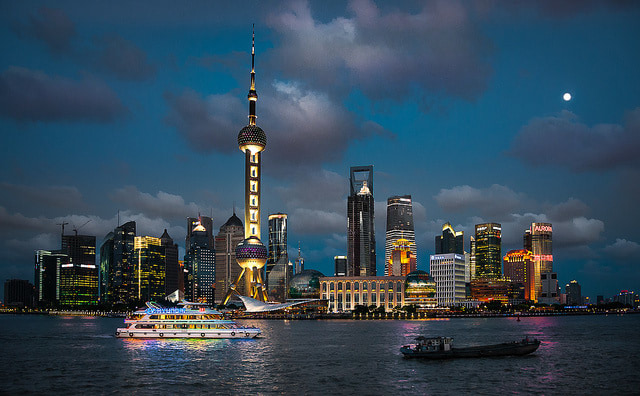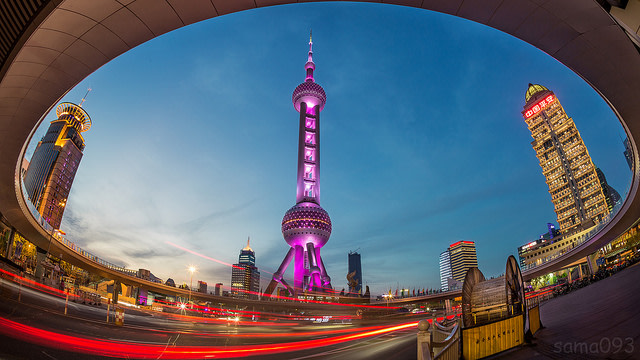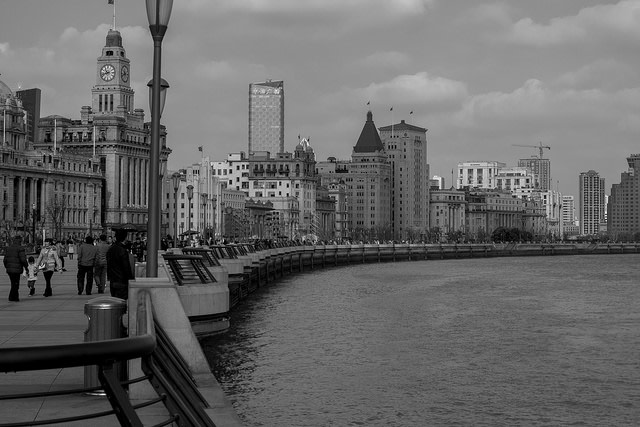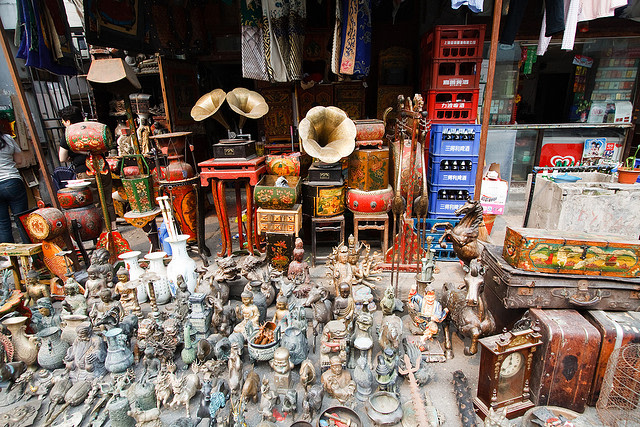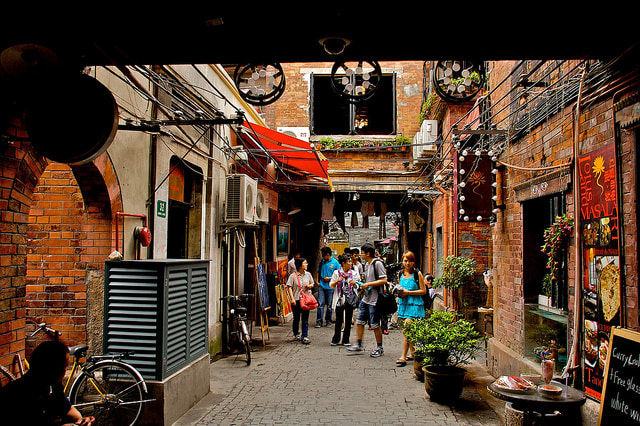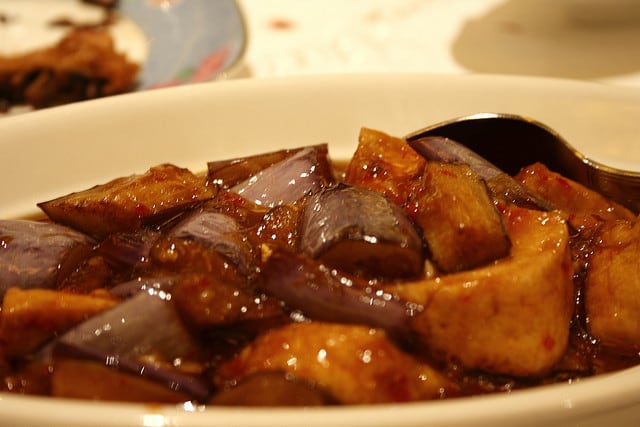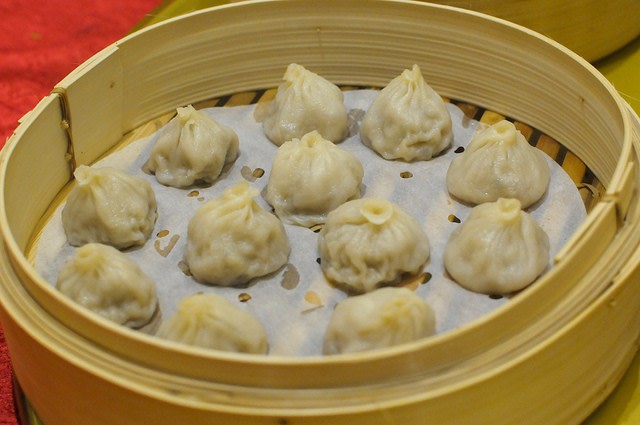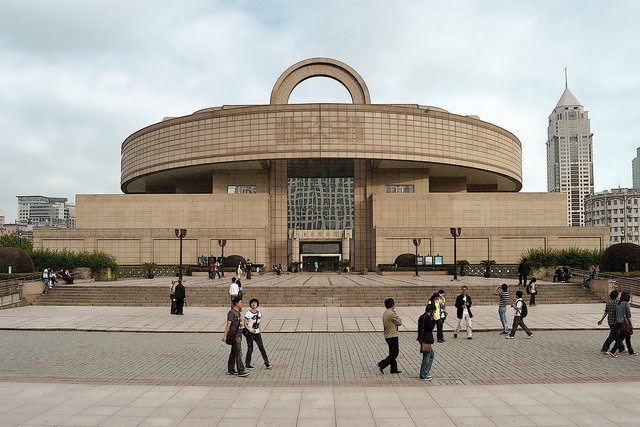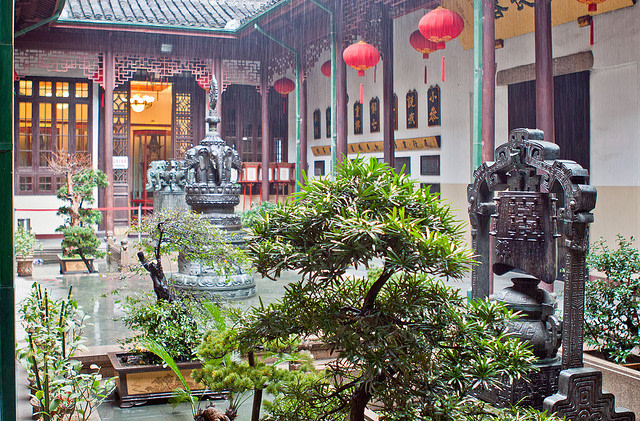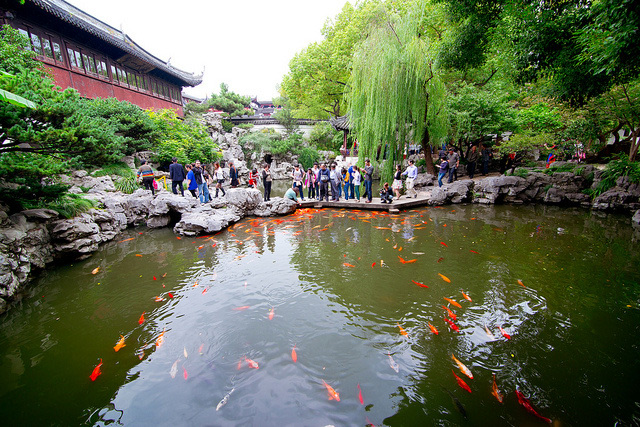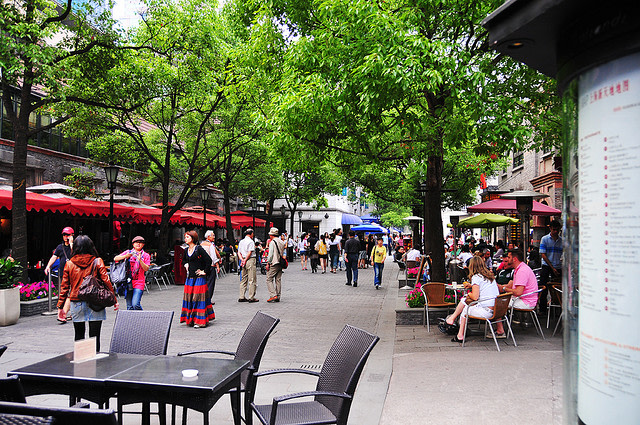| 6 mins read
By Rachel Barac
You just might get whiplash trying to keep up with the ever-evolving city of Shanghai! The skyline alone has changed dramatically since the 1990s from its humble village origins to the now truly international city it has become. This is no place for the faint of heart. Shanghai has one of the largest populations of any city in the world and adapting to change is a way of life here.
Located on the East China coast, Shanghai in mandarin literally means “upon the sea”. On a visit, your first stop will most likely be the Bund. Here, during the day one is struck by the juxtaposition of the old historical buildings lining the Huangpu River and the futuristic architecture across the other side in Pudong. At nighttime the lights take centre stage, in particular the sphere of the iconic Oriental Pearl tower, which shines like a jewel.
Be prepared to share this spectacular view with hundreds of other people keen to take the perfect “selfie” against this impressive backdrop. If the crowds don’t bother you, get a bird’s eye view of The Bund from the sky scraping Shanghai World Financial Centre. This impressive piece of architecture, that some might say looks like a giant bottle opener, stands 494.3 metres high. Although it is difficult to avoid the queues, the view is well worth it and the lines move quite quickly. If you’re after a little more glamour, enjoy a cocktail on one of the many rooftop bars the Bund has to offer. Vue Bar at the Hyatt and the Char Bar at the Indigo Hotel offer particularly impressive panoramic views in chic surroundings.
Shanghai is well known for it’s shopping and the Shanghainese are absolutely not shy about trying to get a bargain. Of course there are the huge shopping malls offering designer duds from every luxury brand you can think of; but as your Shanghai tour guide will tell you, the most fun is had at the smaller markets. This is where one can pick up one-of-a-kind pieces, however be prepared to rummage through the rubble. The Dongtai Road Antique Market is a hidden gem of small stalls selling all kinds of bric-a-brac. Although the term antique can’t be taken too seriously here, there are quite a few interesting souvenirs to be found. Bargaining at these markets is expected and not to mention, a lot of fun. The term “Tai gui le!” (too expensive) accompanied by a fake walk away will do you wonders!
Tianzifang is another outdoor market that offers a maze of alleyways filled with boutiques selling crafts, clothing, jewelry and art. It was originally a residential area with plans to be redeveloped. However backlash from the local community allowed the area to be preserved and turned into the highly popular tourist attraction it is today. If it’s a one off piece you’re looking for, you can venture down to the fabric markets at The Bund and have an item of clothing custom made. Not only are there hundreds of tailors waiting to make you that perfect garment but the prices are reasonable and definitely a lot cheaper than a store bought item.
All of that shopping is bound to make you hungry. Fortunately there is no shortage of places to eat, with a range extending from street food to high-end restaurants serving a wide range of different cuisines from all over China and the world. However Shanghai has a style all of its own. It’s cuisine is generally sweeter than foods in other parts of China and has influences from many of its neighbouring cities. Some popular dishes include braised hairy crab, sweet and sour mandarin fish, lion’s head meatballs (not real lion!) and braised eggplant.
Your gastronomic experience wouldn’t be complete without sampling the dumplings, which come in many different varieties. One particular type of dumpling, which is very popular, is called Xiaolongbao. This is a type of soup dumpling often filled with pork, but more recently there has been the addition of crabmeat. A gelatin type filling is added which then turns into soup when the dumplings are heated by steam. Although you can eat these any way you like, the more traditional way is to bite the top off the dumpling, slurp the soup and then eat the rest with a dark vinegar sauce. Delicious!
Shanghai’s cultural scene is as varied as the food. Situated at the People’s Square the Shanghai Museum houses ancient Chinese art consisting of paintings, bronze and sculpture, ceramics, jade and currency. The building itself is designed to look like an ancient Chinese ding vessel. But if contemporary art is what you’re after, then take a stroll down to 50 Moganshan Road. This was once an industrial area that is now a thriving art community. There are 120 galleries and studios open to the public. It’s a refreshing pit stop from Shanghai’s more commercial side.
Also hidden amongst the hustle and bustle is the Jade Buddha Temple. The temple, situated in Jing’an, was founded in 1882 to house two jade Buddha’s imported from Burma. Although the original temple was destroyed during the 1911 uprising, the jade Buddha’s were maintained and a new temple was built. The history of the temple might not be particularly old, but the architecture and beauty of the interior are worth seeing.
Beauty can also be found in the many parks and gardens littered around Shanghai. Yu Garden is one such place. Located at Huangpu it was completed in 1577 it’s divided into six general areas featuring rockeries, ponds, arched bridges and pavilions reflecting the Ming Dynasty.
For the nocturnal, there is a thriving nightlife in Shanghai. The Bund hosts the majority of the large clubs while the trendy former French Concession has a new speakeasy opening every other week. Yongkang Road is a famous street among expats displaying a variety of different bars at what used to be a local wet market before it was transformed.
A trip to Shanghai is a wonderful fusion of ultra modern and ancient Chinese culture. People on the latest smart phones walk past street corners with groups of people playing Mahjong, and brand new luxury cars share the roads with tuk tuks and bicycles. There is so much to explore in Shanghai that one trip will not be enough. As the Chinese say “Zaijian!” (See you again).
Image Details and Licenses: https://flic.kr/p/rbmRa4 (Bernd Thaller, CC BY-NC 2.0), https://flic.kr/p/smGCEY (sama093, CC BY-NC-ND 2.0), https://flic.kr/p/r142wz (Francis Shum, CC BY-NC-ND 2.0), https://flic.kr/p/6BfxTx (Matthew Stinson, CC BY-NC 2.0), https://flic.kr/p/8cWEV6 (Birger Hoppe, CC BY-NC-ND 2.0), https://flic.kr/p/apnby9 (Michelle Lee, CC BY-NC-ND 2.0), https://flic.kr/p/5twr8L (Alicia Griffin, CC BY-NC-ND 2.0), https://flic.kr/p/bPWxYH (Jan, CC BY-ND 2.0), https://flic.kr/p/7NzdZo (Greg Pietersma, CC BY-NC-ND 2.0), https://flic.kr/p/gW9P1C (ThalesEGO, CC BY-NC-ND 2.0), https://flic.kr/p/6oyySa (Wolfgang Staudt, CC BY-NC 2.0)


